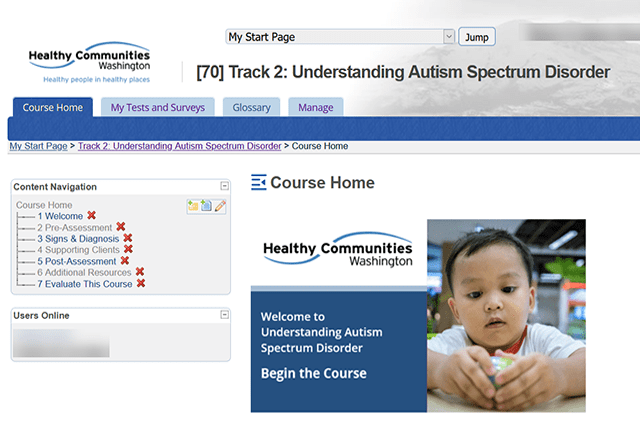Remote learning is here to stay. Virtual training will surely continue, even when in-person options become available after the coronavirus disease (COVID-19) pandemic lessens.
The reasons are clear. It’s a useful, cost-effective way of giving your staff new skills or refreshing ones they already have. Plus, it’s safer than sitting in a conference room with dozens of other people.
RAND Corporation recently announced the same findings in a report about students returning (or not returning) to the classroom.
It’s a trend that’s been happening anyway. Market researchers have said that online education will climb to $350 billion by 2025.
Online learning has a lower cost.
This should make your decision to invest in online professional development easier–even for the skeptics in your agency. Online learning is much more affordable than traditional in-person courses.
Even after investing in developing new courses, organizations like yours still can avoid paying for travel and accommodations. You might not see savings in year one, but years two, three, and onward will be much less.
How to start online professional development.
The difficult part is in the execution. Most training programs for healthcare teams offer live instruction, and converting those training materials into an online format is about as easy is it is to move from a house you’ve lived in for decades.
Begin with blended learning.
An easy way to begin adopting an e-learning model is not to convert everything online at once. Keep a portion of your in-person training exactly how it is, and adopt a blended-learning strategy.
Blended learning mixes the best of training delivery methods to suit different people’s learning needs and different subject matter. In other words, you can pick and choose what you train for in-person and what you train for online.
One benefit is that a live session allows for participants to meet each other and make connections with instructors and classmates that result in better retention. It can also be helpful for delivering material that’s better suited to in-person instruction.
For example, you might provide online diversity training to your team. Then, on completion, you can build on what was in the remote course with material that meets your agency’s goals, demographics, departments, or other factors.
Another example is from the Massachusetts Department of Public Health’s Patient Navigation Online Course. It includes a 10-week online element that begins and ends with face-to-face teaching. The instructors cover such topics as communication techniques in the group, which gives participants a chance to try out newfound skills in a live setting. Other topics, such as documentation skills, convert easily to an online format.
Keep online training focused.
Many health-based organizations new to online learning fall into the trap of thinking they have to give learners everything that they previously included with in-person training. Not everything in the trainer’s toolkit needs to be delivered online.
Too many reading assignments and activities can take up a lot of time. Learners spend more time in the online course than applying their new job skills. Information overload can also be overwhelming, and some learners will lose focus and simply give up, even if the training is part of their job requirement.
Program administrators should remember to have faith that employees will learn on the job. The reason you present them with theories and tools is so they can apply them in a work setting.
Set up a system where supervisors or coaches can guide recent participants through using those foundational skills on the job. Make sure they’re acquainted with all the training materials so they know what to evaluate for knowledge-gain.
Questions to answer before starting an online professional development project.
When you’re getting ready to make the decision to launch an e-learning program, run through these questions as part of your needs assessment.
- What are your agency’s or program’s goals?
- What are your learners’ schedules like?
- What’s your budget for the next five years?
- Is the topic foundational or does it require practice in the field?
- Do your employees have past experience with remote training?
- Is your workforce all in one place or spread out geographically?
Follow these tips, and you’ll find that switch to e-learning will result in a group of people curious and excited about a new learning format. If you think a blended approach works for you, read more about what it takes to start a blended learning program.



